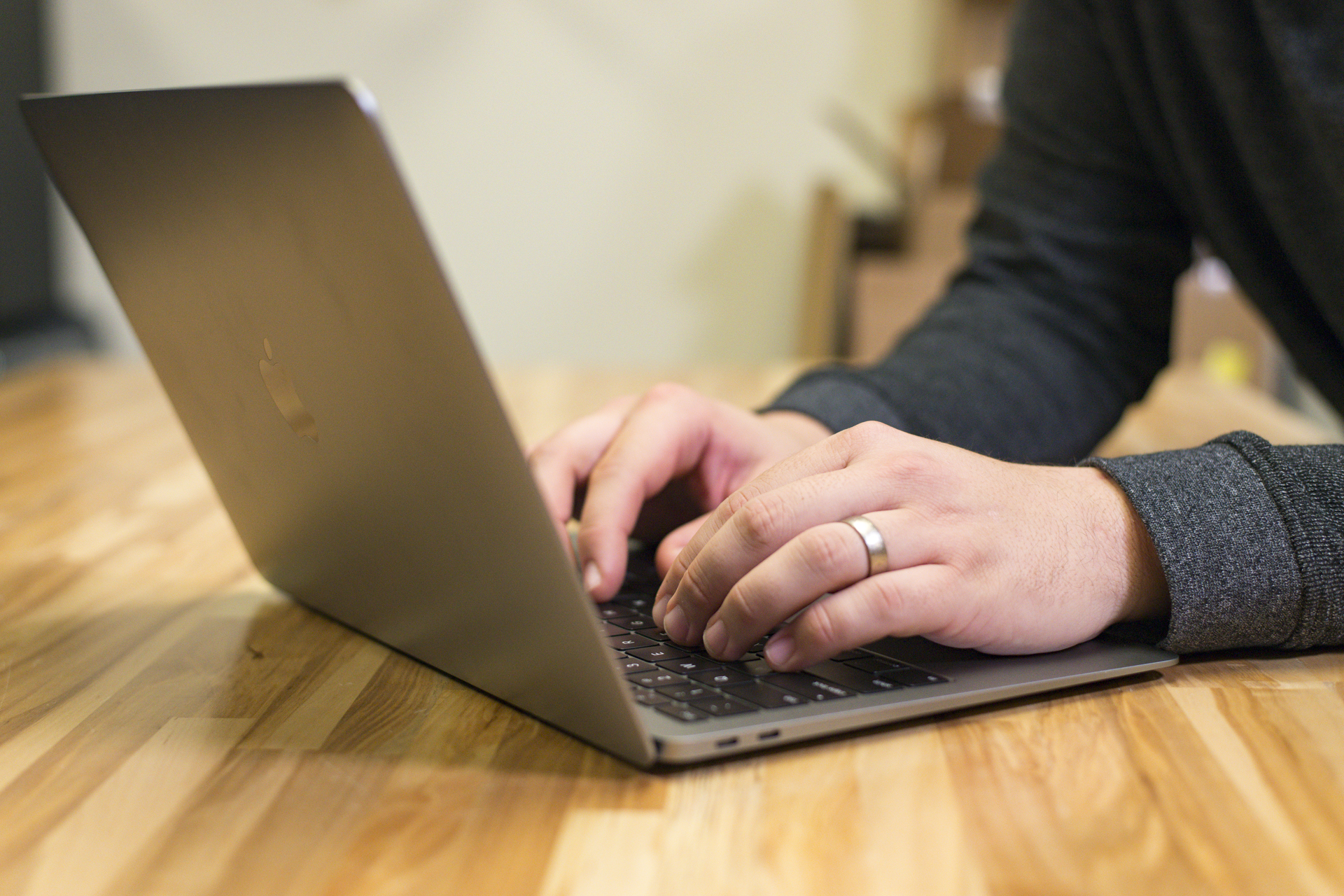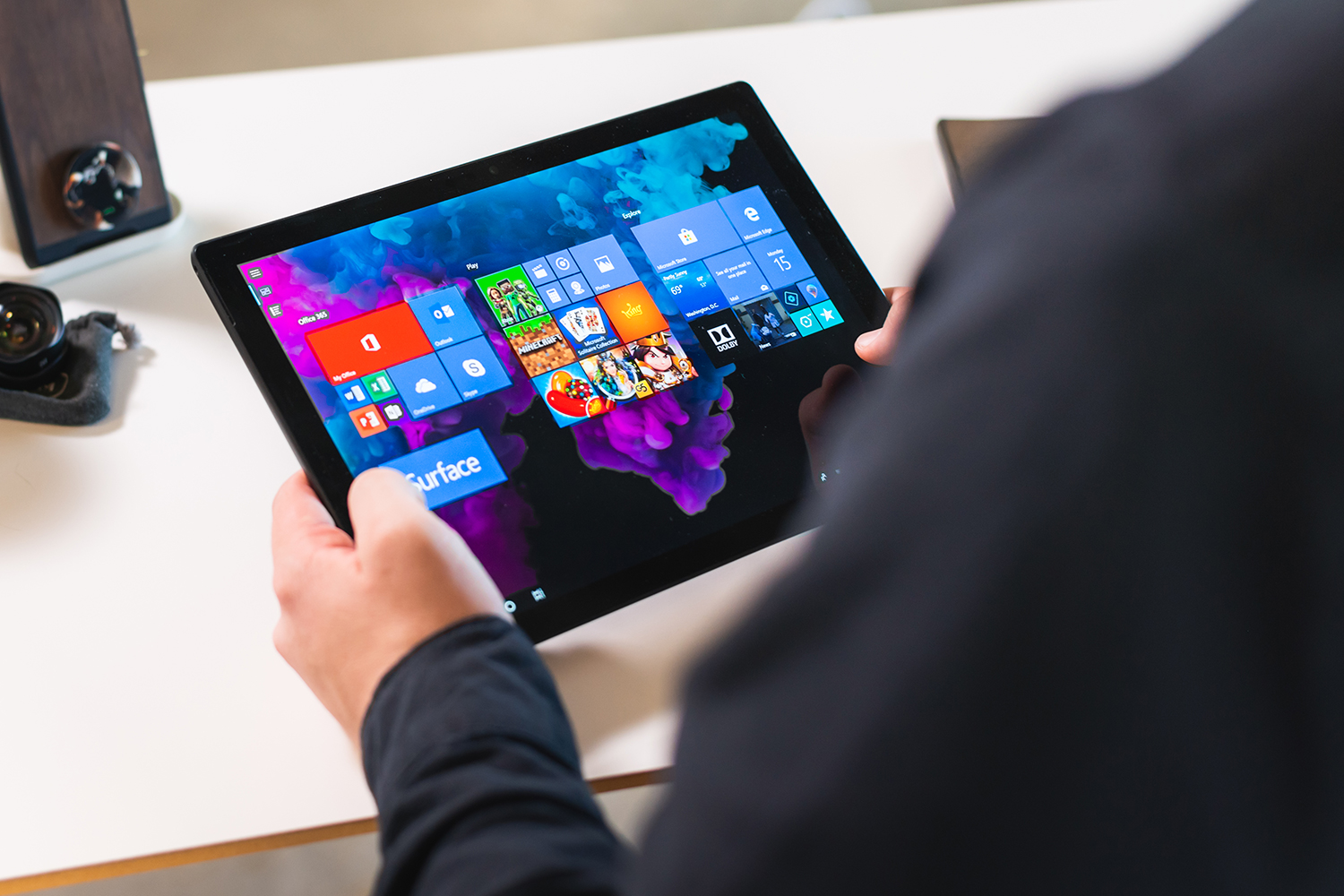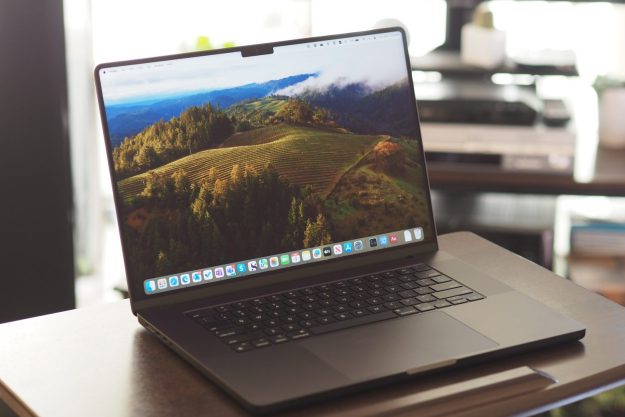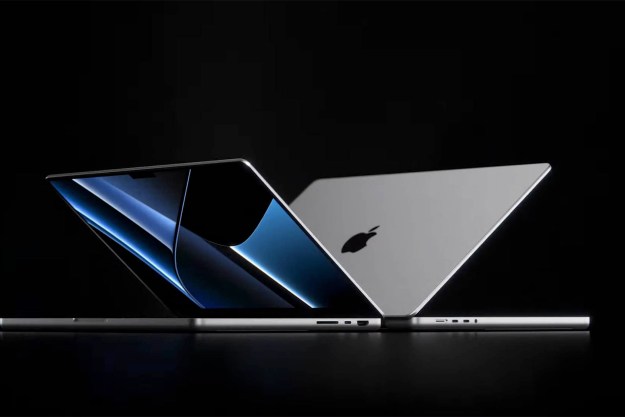The MacBook Air spent a few years in Apple’s doghouse, serving as the low-cost and antiquated entry into the company’s notebook line. That changed just recently, though, with an updated version that moves forward to the latest CPU and migrates to a few significantly better components.
The notebook industry hasn’t stood still since the MacBook Air was last updated, though, and Microsoft’s detachable tablet Surface Pro 6 is one of the best examples of just how far along its come. Does the revamped MacBook Air have what it takes to take on the best 2-in-1 on the market?
Design

The MacBook Air’s chassis underwent some significant changes this year. It’s still the same sort of wedge shape that kicked off the thin-and-light notebook market, but it’s now even thinner at between 0.16 and 0.63 inches, and it weighs in at 2.8 pounds. It’s also just as robust and well-built as the rest of Apple’s lineup and comes in three color options — gold, silver, and space gray.
The Air inherits the same third-generation butterfly keyboard as the other MacBooks, with all of its strengths and weaknesses. If you don’t like the keyboard elsewhere, you won’t like it here. The touchpad is the same very large Force Touch version as well, and that’s much better and arguably the best around. Connectivity is another area where the Air “caught up” with its siblings. Gone are the USB-A, HDMI, and microSD connections, and you’re left with just two USB-C ports with Thunderbolt 3.
The Surface Pro 6, on the other hand, continues to showcase Microsoft’s now-iconic Surface design aesthetic and build, with silver-gray magnesium formed into a sliver of a tablet that’s thin (0.33 inches), light (1.73 pounds), and very robust. The Surface Pro 6 is a solid chunk of metal and glass, and in its 6th generation, it’s become the most elegant and modern Windows tablet with the smoothest and most flexible kickstand. Its connectivity is even more limited than the Air’s, with only one USB-A 3.0 port, a Mini DisplayPort, and a Surface Connect port. You won’t find USB-C or Thunderbolt 3 here.
In terms of input, the Surface Pro 6 is well-stocked. The Type Cover is a $130 extra, but the keyboard add-on offers a precise mechanism and consistent backlighting, a superior (albeit small) Microsoft Precision touchpad with support for all Windows 10 gestures, and it magnetically attaches to the slate and props at a comfortable typing angle. And the $100 Surface Pen offers 4,096 levels of pressure sensitivity, tilt support, and the fastest response times among all Windows 10 tablets. Of course, the display is also nicely touch-enabled.
You can also get the Surface Pro 6 in a sleek black color, and we find it to offer a superior and more modern design than the MacBook Air. They’re both well-made, but Microsoft’s tablet is a better fit in today’s notebook market.
Performance

The MacBook Air does have an Intel 10th-generation CPU packed inside, but that’s a bit deceiving. It’s a Y-series, which is still dual-core and runs at lower power. Apple sourced a special version of the processor, and it’s a bit faster than the Y-series you’ll find in other similarly configured notebooks, but it’s not going to keep up with full-powered offerings. The PCIe solid-state drive (SSD), though, is ludicrously fast.
One such full-powered option is the Surface Pro 6, which also received Intel’s 8th generation of processors, only it received the U-series. These are quad-core CPUs with eight threads, and they’re both fast and efficient. Microsoft packed a lot of power into the Surface Pro 6’s tablet portion, and it’s a fast performer no matter its form factor. The SSD is also a speedy PCIe version that keeps the system loaded up with data.
The Air also received an upgrade to its 13.3-inch 16:10 display, specifically bringing it up to Retina resolution (2,560 x 1,600 or 227 PPI), and that’s a welcome change. Unfortunately, the panel Apple selected doesn’t live up to the usual MacBook standards. It’s not as bright at just 291 nits (compared to greater than 500 nits on the MacBook Pro 13), and its contrast and color gamut aren’t as impressive.
The Surface Pro 6 has a 12.3-inch display that’s incredibly sharp at 2,736 x 1,824 (267 PPI) and with a productivity-friendly 3:2 aspect ratio. It also uses Microsoft’s latest Pixelsense technology that creates as thin a panel as possible, creating images that really pop and making pen and fingertip presses as natural as possible. The display offers over 400 nits of brightness and some of the best contrast you’ll find on a notebook display, although colors aren’t as impressive.
The Surface Pro 6 is faster, and it has a better display. Enough said.
Portability

As we mentioned above, the MacBook Air is thinner and lighter than ever, and it’s a bonafide member of the thin and light category. The Surface Pro 6 is even more portable, even when you include the Type Cover that makes the entire package around as portable as the MacBook Air.
That’s only one aspect of portability, though, with battery life also impacting a notebook’s usefulness on the road. In this regard, the Air falls a bit flat of Apple’s standards, offering good but not great battery life — while the Surface Pro 6 took some serious strides forward in its longevity.
In all of our tests, Microsoft’s tablet was the longer-lasting device. When browsing the web, for example, the Surface Pro 6 lasted for nine and a half hours to the Air’s roughly eight hours. In spite of its more powerful processor, Surface Pro 6 also lasted slightly longer in our most demanding Basemark web benchmark test.
Neither of these machines is going to weigh you down or take up too much space in your backpack. But the Surface Pro 6 will last you longer away from an outlet and make it less likely that you’ll have to carry around a bulky AC adapter.
The Surface Pro 6 got the better update

Users can buy Apple’s Macbook Air with a Core i3 processor and eight GB for just $899. On top of the budget-friendly deal, Apple will also share a free pair of AirPods with the setup. If you still want more processing power beyond that, though, you could consider upgrading the device. That upgrade to a laptop with a quad-core 10th-generation Core i5 and a 512GB SSD will cost you a bit more at $1,299. The Macbook Air is the cheaper option in the series, along with the Macbook Pro. However, if you check out Windows 10 laptops at a similar price point, you’ll find that they overpower laptops with a Y-series processor.
Prices for the Surface Pro 6 start at $900— the cost covers a Platinum-colored Core i5, 8GB of RAM, and a 128GB SSD. You can upgrade from that, though, to trick out your Surface Pro 6. It’ll cost a bit more money, but you can add a Type Cover for $130 or a Surface Pen for $100. These items are pretty essential if you want to reap maximum benefits from this notebook and test its 2-in-1 functionality. Or you could opt for a higher-end notebook; At $2000, you can get a Surface Pro 6 with a Core i7, 16GB of RAM, and a 1TB SSD.
We personally think, if you’re a loyal Apple fan, it may not be worth it to switch over to a Windows operating system. Even with their extensive features, it’ll be challenging to change operating systems entirely. If you are open to a new OS, then go for the Surface Pro 6. The notebook features a sharp-looking design, stellar performance levels, and optimized 2-in-1 functionality.
Editors' Recommendations
- Best refurbished MacBook deals: Get a MacBook Air for $140 and more
- Best Surface Laptop and Surface Pro deals: From $523
- MacBook Pro OLED: Here’s everything we know so far
- Surface Pro 10: all the major changes rumored for the new model
- The XPS 16 is fighting an uphill battle against the MacBook Pro


